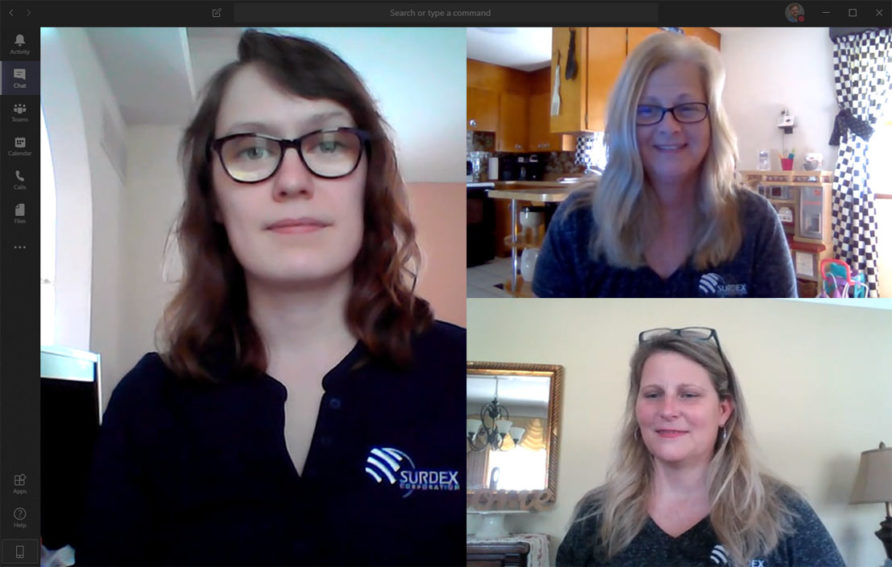
During Coronavirus, Business as Usual
Surdex Implements Contingency Plan during Coronavirus Outbreak
During a time of uncertainty, it’s good to have peace of mind. Public and private entities are coping with their own employees’ health and safety – plus maintaining basic service levels. They have little energy left to worry about their contracted projects getting completed on time.
 No need to worry, Surdex has instituted contingency protocol, and every phase of operations is working just like normal – even though 95% of operations is being conducted remotely.
No need to worry, Surdex has instituted contingency protocol, and every phase of operations is working just like normal – even though 95% of operations is being conducted remotely.
Over the years, we have developed contingency and emergency protocols to meet any foreseeable disruption, from power outages to flooding to tornadoes. These protocols include backup electrical systems, plans for re-routing as needed for continued aircraft operations, and an IT system that enables employees to work remotely and securely, without a hitch; the system is designed to carry the bandwidth for the massive amount of image data and other data, enable ongoing communication, and maintain data backup and storage.
Central to this migration are the preparations over the last two years including optimizing our firewall for security, optimizing ISP connections, moving key infrastructure to the cloud, and moving to more in-house software not hamstrung by licensing that does not support remote work. As such, almost every technician can work remotely using the same software and with the same level of security and productivity as if they were in the office.
It is this extensive preparation that enabled us to respond so quickly during the COVID-19 situation. Our mobilization began long before a crisis was formally announced. Leadership foresaw the possibility of a quarantine or restriction scenario, and plans were developed to meet the challenges. After a national state of emergency was declared and the local government instituted office closures, Surdex was able to continue service, being defined as an essential service provider because of the specialized nature of our work.
Surdex then instituted the contingency protocols, and approximately 95% of our staff began working remotely. Only key positions that must be performed in-house remain (for example, aircraft mechanics) The objective was to equip employees to perform in the same manner from their homes as they would in the office. Steps include:
- Migrating workstations: employees either use their own home computers when suitable or use company computers. Many technicians use two-monitor systems. Home connections were evaluated to ensure adequate bandwidth. Ethernet connections were installed where needed.
- Use of “Remote Connection”: this system enables employees to use a home computer to dial in to their work computer, just as if they were sitting in the office. They can use the same software and access all their files.
- Communications: employees employ a variety of communication as propriate—cell phones, e-mail, texting, and Microsoft Teams. Teams has enabled group meetings, video conferencing, sharing of documents and presentations, sharing calendars, and screen sharing for complex instruction and training.
- Increased frequency of communication: the only notable difference in work habits is that everything requires a higher level of communication to ensure complete understanding. The Ortho department conducts morning check-in meetings, and 3D Mapping conducts morning roll call. Our project managers were already familiar with these communications tools – two of the department’s five staff live outside of the area, so they were virtually unaffected.
- Maintain CDC-recommended protocol in the workplace: not all activities can be conducted digitally (for example, downloading data from the physical sensor drives). The Ortho department rotates the in-office duties for downloads and data management (archiving and restoring data). The few employees remaining in the office can easily spread out, since the main building is 95% unoccupied. All surfaces are disinfected including keyboards, desks and mice after use in a commons area workspace.
- Air crews and surveyors adopt standard protocol: as a requirement of their positions, these employees observe heightened precautions and all CDC-recommended steps to avoid contact with potentially contaminated surfaces or people.
All these steps have been undertaken without missing a beat – all projects remain on schedule. This is a testament to the foresight and planning of our teams, the hard work of our IT department to construct the infrastructure, and all staff to use these tools successfully. Surdex is committed to doing its part to stop the spread of the virus during this national situation – while remaining fully committed to delivering you our quality products on schedule.
